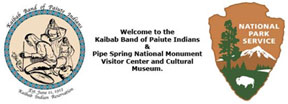
 Pipe Springs National Monument shows exemplary collaboration with Kaibab Paiute Tribe
Pipe Springs National Monument shows exemplary collaboration with Kaibab Paiute Tribe
By Audrey Peterman
Welcome to Day #226 of our “365 Parks in 365 Days” ad-venture.
“Gratifying” is the word uppermost in my mind this morning, based upon this note I received yesterday from Superintendent Jock Whitworth, after I asked yesterday for those with more information about Cedar Breaks to share:
Superintendent Whitworth is one of my Top Ten Favorite Superintendents in the entire park system, and I appreciate him taking the time to respond, if only briefly. I was considering an optional trip to Zion in February and now I know I must go so I can see these two parks that are new to me.
Superintendent Whitworth and I met each other on a crowded shuttle bus on the scenic drive in Zion National Park in 2006. He wasn’t in uniform, opting for his favorite Hawaiian shirt that day, so I had no way of knowing that he was the official I was hoping to connect with at his office. On the bus, our 10-year-old grand-daughter Sydnee was talking about the “aquanator” that she’d seen the previous night at the ranger talk by the Virgin River. This bird feeds mostly underwater and made her and the other four grandchildren very excited.
The man standing near us joined in the conversation, and turned out to be Superintendent Whitworth. Over the years we’ve met many other times at the annual convention of the Association of Partners for Public Lands, which supports the historic associations, ‘friends’ groups and field institutes that operate on the public lands system. I cannot overstate how wonderful it is to have friends with whom I feel as close as family in national parks from Alaska to Florida and Hawaii.
A brief visit to Pipe Spring National Monument’s website had me agape at all the things I didn’t know:
The Proclamation naming the park states that it “…affords the only water along the road between Hurricane, Utah, and Fredonia, Arizona, a distance of sixty-two miles … Pipe Spring is a place of water in a desert land. This water has attracted plants, animals, and people over time.
“The three main cultures to occupy Pipe Spring are the Ancestral Puebloans, the Kaibab Band of Paiute Indians, and the Mormon Pioneers. The Ancient Puebloans (Anasazi) inhabited the area from approximately 1 A.D. to 1200 A.D. The Paiute tribe followed the Anasazi, and had lived in the Pipe Spring region for nearly three centuries by the time the European settlers began moving into this area.
” In 1870, the Church of Jesus Christ of Latter-Day Saints (the Mormons) began construction of a fortified ranch house at Pipe Spring. The ranch house/fort was designed as both a headquarters for a tithing cattle ranch and as protection from Indian attacks. The Mormon settlers did not particularly fear the Paiute tribe, which at that time inhabited much of the Arizona Strip, but the Navajo, who would cross the Colorado River at low water and raid both the Paiutes and the settlers.
“The fortified ranch house was constructed directly over Pipe Spring, similar to castles in Europe and the Middle East
“The Mormons were only the latest group to be drawn to Pipe Spring, which had attracted people for centuries.
“Three episodes of Death Valley Days (Long Night at Fort Lonely, Key to the Fort and A Full House) were filmed at Pipe Spring National Monument in 1967.
“On January 19, 1854, The Church of Jesus Christ of Latter-day Saints adopted the Deseret alphabet. The new alphabet consisted of 38 to 40 characters and was developed mostly by George D. Watt. It was an attempt to help simplify spelling in the English Language.. .”
I was unable to find on the park’s website or through a brief web search why this monument was established in 1923, and I presume it has to do with the fact this is a unique and singular source of water in the area.
However, I am most encouraged to see the strong relationship that the Native Americans have with the National Park Service, resulting in, among other things, the Kaibab Band of Paiute Indians & Pipe Spring National Monument Visitor Center and Cultural Museum that was cooperatively funded, built, and operated by the National Park Service and the Kaibab Paiute Tribe. I’ve been to 170 units of the Park System from Alaska to Florida and I don’t recall ever seeing this type of collaboration before.
The center and museum offer opportunities to learn about pioneer and Kaibab Paiute life. I also look forward to exploring the historic fort and cabins, garden, orchard, and Ridge Trail, to visiting with rangers, ranch animals, and attending living history demonstrations and talks.
Here’s to more collaboration and more unity among Americans of every stripe and culture. And of course, I extrapolate that to include collaboration among all creatures in our entire world.
If you’ve missed any of our tours in this series, find them at our Archives, and be sure to pick up your signed, autographed copy of my books about the national parks while you’re there.


Be the first to comment